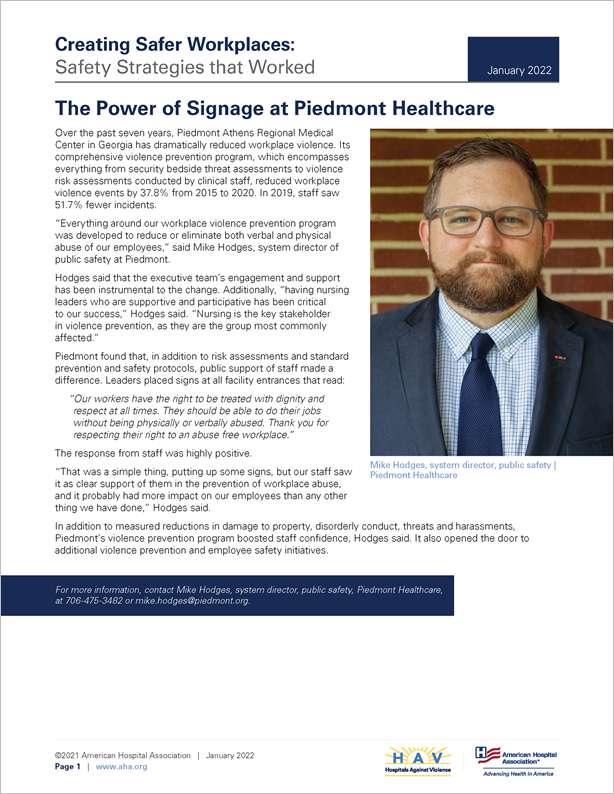Case Study: The Power of Signage at Piedmont Healthcare
Over the past seven years, Piedmont Athens Regional Medical Center in Georgia has dramatically reduced workplace violence. Its comprehensive violence prevention program, which encompasses everything from security bedside threat assessments to violence risk assessments conducted by clinical staff, reduced workplace violence events by 37.8% from 2015 to 2020. In 2019, staff saw 51.7% fewer incidents.
“Everything around our workplace violence prevention program was developed to reduce or eliminate both verbal and physical abuse of our employees,” said Mike Hodges, system director of public safety at Piedmont.
Hodges said that the executive team’s engagement and support has been instrumental to the change. Additionally, “having nursing leaders who are supportive and participative has been critical to our success,” Hodges said. “Nursing is the key stakeholder in violence prevention, as they are the group most commonly affected.”
Piedmont found that, in addition to risk assessments and standard prevention and safety protocols, public support of staff made a difference. Leaders placed signs at all facility entrances that read:
“Our workers have the right to be treated with dignity and respect at all times. They should be able to do their jobs without being physically or verbally abused. Thank you for respecting their right to an abuse free workplace.”
The response from staff was highly positive.
“That was a simple thing, putting up some signs, but our staff saw it as clear support of them in the prevention of workplace abuse, and it probably had more impact on our employees than any other thing we have done,” Hodges said.
In addition to measured reductions in damage to property, disorderly conduct, threats and harassments, Piedmont’s violence prevention program boosted staff confidence, Hodges said. It also opened the door to additional violence prevention and employee safety initiatives


